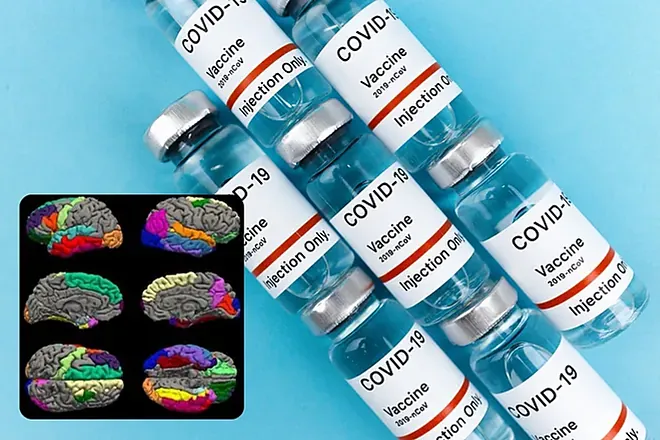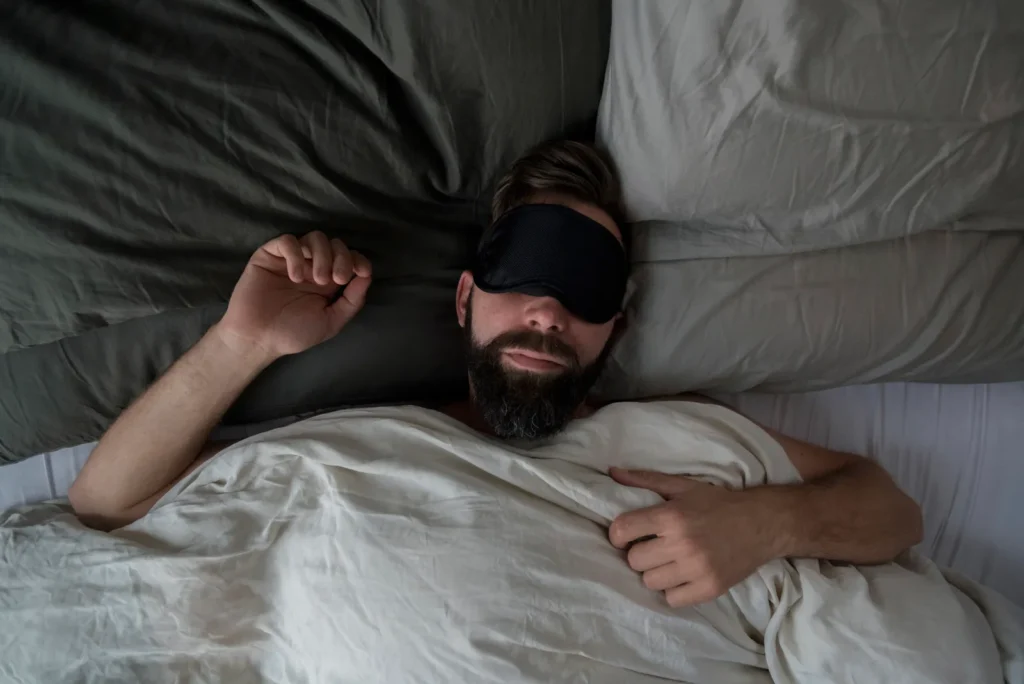The COVID-19 pandemic didn’t just challenge our physical health—it took a toll on our brains. From the virus’s direct effects to the stress of lockdowns, social isolation, and disrupted routines, our mental well-being has been through a lot. This blog post dives into how COVID-19 and the pandemic impacted the brain, whether those changes can be reversed, and practical steps to support recovery. Written in simple, human language, this guide aims to help you understand and take control of your brain health.

How COVID-19 Directly Affects the Brain
The SARS-CoV-2 virus, which causes COVID-19, doesn’t just attack the lungs—it can also affect the brain. Here’s how:
Neurological Symptoms of the Virus
When people first started getting sick with COVID-19, many noticed strange symptoms beyond a cough or fever. Common issues included:
- Loss of smell and taste: This happens because the virus may target the olfactory nerves, which connect your nose to your brain. For some, it’s a temporary glitch; for others, it lingers.
- Headaches: A frequent sign that the virus is irritating the nervous system.
- Brain fog: Many reported feeling mentally sluggish, struggling with focus or memory even after recovering.
In severe cases, the virus caused more serious problems like strokes, seizures, or brain inflammation (encephalitis). These issues suggest that the virus can either directly infect brain cells or trigger inflammation that disrupts normal brain function.
Brain Aging and Structural Changes
Research has shown something alarming: COVID-19 might make the brain look older than it should. Brain scans of some infected people revealed reduced gray matter—the part of the brain responsible for thinking, memory, and decision-making. These changes are similar to what happens in natural aging, raising concerns about long-term cognitive decline. While the exact cause isn’t fully understood, inflammation from the virus is likely a key player.
The Pandemic’s Indirect Toll on the Brain
The virus itself wasn’t the only problem. The pandemic brought massive lifestyle changes and emotional challenges that hit our brains hard. Let’s look at the main culprits:
Social Isolation and Loneliness
Lockdowns and social distancing meant less time with friends, family, and coworkers. Humans are social creatures, and our brains thrive on connection. Isolation led to:
- Increased anxiety and depression, which can physically alter brain structure over time.
- Reduced stimulation, making it harder for the brain to stay sharp.
Chronic Stress and Uncertainty
The pandemic was a rollercoaster of fear—about health, jobs, and the future. This constant stress kept our brains in “fight or flight” mode, which:
- Shrinks the hippocampus, a brain area crucial for memory and learning.
- Overactivates the amygdala, the brain’s fear center, making us feel on edge.
Disrupted Routines and Unhealthy Habits
Life during the pandemic threw our routines out the window. Many of us:
- Exercised less, which is bad for brain health since physical activity boosts blood flow and new brain cell growth.
- Slept poorly due to stress or irregular schedules, leading to cognitive fatigue.
- Spent hours doomscrolling on screens, which can overwhelm the brain and reduce focus.
These changes piled up, leaving our brains overworked and under-supported, mimicking the effects of premature aging.
Long-Term Effects: Brain Fog and Beyond
For some, the brain effects didn’t go away after the virus cleared. This is especially true for people with long COVID, who report ongoing issues like:
- Brain fog: Trouble concentrating, remembering things, or thinking clearly.
- Fatigue: A mental and physical exhaustion that makes daily tasks harder.
These lingering effects might come from:
- Persistent inflammation: The virus’s impact on the brain may not fully resolve, even after recovery.
- Psychological strain: The emotional weight of the pandemic may have rewired neural pathways, making it harder to bounce back.
While it’s tough to say whether the virus or the pandemic’s stress caused more damage, the combination has clearly left many brains feeling older and less sharp.
Are These Brain Changes Reversible?
The good news? The brain is incredibly resilient. Many of the changes caused by COVID-19 and the pandemic can be partially or fully reversed with time and effort. Here’s how recovery works:
Reversing Direct Effects of the Virus
- Mild symptoms like brain fog or loss of smell: These often improve within weeks to months as the brain rewires itself through neuroplasticity—the ability to form new neural connections. For example, smell training (sniffing strong scents daily) can help restore olfactory function.
- Severe damage like strokes or encephalitis: Recovery depends on the extent of the injury. While some damage may be permanent, rehabilitation (like physical or cognitive therapy) can help regain function.
- Gray matter loss: It’s less clear if structural changes fully reverse, but reducing inflammation through healthy habits may help. Research is still ongoing, but early studies suggest the brain can recover some lost ground.
Reversing Indirect Effects of the Pandemic
The mental and emotional toll of the pandemic is often easier to address because it’s tied to lifestyle and behavior:
- Social isolation: Reconnecting with others—whether through coffee dates or group activities—can boost mood and brain health. Social interaction stimulates the brain and reduces stress.
- Chronic stress: Techniques like mindfulness, meditation, or therapy can calm the brain’s fear response and promote hippocampal growth. Even small steps, like deep breathing, make a difference.
- Poor habits: Getting back to regular exercise, better sleep, and less screen time can work wonders. For example, aerobic exercise has been shown to increase hippocampal volume and improve memory.
Factors That Affect Recovery
Not everyone recovers at the same pace. Key factors include:
- Severity: Mild symptoms are more likely to resolve than severe neurological damage.
- Age and health: Younger, healthier people tend to recover faster due to greater brain plasticity.
- Action: Taking proactive steps—like exercising or seeking therapy—speeds up recovery. Ignoring symptoms can make things worse.
Practical Steps to Support Your Brain’s Recovery
Ready to help your brain bounce back? Here are simple, actionable steps to restore your mental sharpness and well-being:
1. Prioritize Physical Activity
Exercise is like a superfood for your brain. It increases blood flow, promotes new brain cell growth, and reduces inflammation. Try:
- 30 minutes of brisk walking, jogging, or dancing most days.
- Yoga or strength training to mix things up.
2. Rebuild Social Connections
Your brain thrives on human interaction. Reconnect by:
- Calling a friend or family member regularly.
- Joining a club, class, or community group to meet new people.
3. Manage Stress Effectively
Chronic stress is a brain killer, but you can fight it with:
- Mindfulness or meditation: Apps like Headspace or simple breathing exercises can calm your mind.
- Therapy: Talking to a counselor can help process pandemic-related stress or anxiety.
4. Improve Sleep Habits
Good sleep is essential for brain repair. Aim for:
- 7-9 hours of sleep per night.
- A consistent bedtime routine—avoid screens an hour before bed.
5. Eat Brain-Healthy Foods
A balanced diet supports cognitive recovery. Focus on:
- Fruits, vegetables, and whole grains for antioxidants and nutrients.
- Omega-3-rich foods like salmon or walnuts to support brain cell health.
6. Challenge Your Brain
Keep your mind sharp with activities like:
- Puzzles, crosswords, or learning a new skill (like cooking or a language).
- Reading or engaging in creative hobbies to stimulate neural connections.
7. Seek Professional Help if Needed
If brain fog, depression, or other symptoms persist, don’t hesitate to:
- See a doctor or neurologist for persistent neurological issues.
- Consult a therapist for mental health support.
The Road Ahead: Hope for Your Brain
The COVID-19 pandemic and its virus have left a mark on our brains, but the story doesn’t end there. With the right steps, much of the damage—whether from the virus’s inflammation or the pandemic’s stress—can be reversed or improved. The brain’s ability to adapt and heal is remarkable, and by prioritizing healthy habits, social connection, and mental care, you can help your mind recover and thrive.
Research is still unfolding, and we’re learning more every day about how COVID-19 affects the brain long-term. For now, the best approach is to take action early and stay consistent. Your brain has been through a lot, but it’s ready to bounce back with a little help from you.
Disclaimer: This blog post is for informational purposes only and not a substitute for professional medical advice. If you’re experiencing persistent symptoms, consult a healthcare provider.






